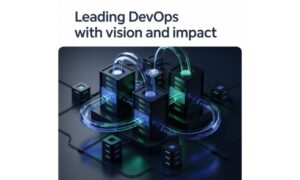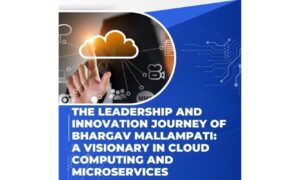Welcome to the future of software development! In this fast-paced digital era, where innovation reigns supreme, mastering next-gen strategies is crucial for carving out a successful path in the tech industry. From ideation to execution, developers must adapt and evolve alongside ever-changing technologies and customer demands. Are you ready to embark on a journey that will redefine your approach to creating groundbreaking software solutions? Join us as we explore the secrets behind mastering next-gen software development strategies that will not only revolutionize your projects but also propel your career to new heights. Buckle up – it’s time to dive headfirst into the world of cutting-edge development practices.
Introduction to Software Development Processes
As the world of software development evolves, so do the processes and strategies for creating successful software applications. In this section, we’ll provide an overview of some of the most popular software development processes and give you a glimpse into how they work.
The first process we’ll look at is the waterfall model. This is one of the earliest software development models and is still in use today. It’s a linear approach that goes from idea to implementation, with each phase being completed before moving on to the next. The main benefit of this model is its predictability – it’s easy to see how long each phase will take and what needs to be delivered at each stage. However, it can be inflexible and doesn’t allow for much changes once a project has started.
Next, we have the agile methodology. This is a more flexible approach that allows for constant iteration and collaboration between developers and stakeholders. Agile teams work in sprints, which are short cycles of work that include planning, development, testing, and feedback. This iterative approach helps ensure that products are constantly evolving to meet customer needs.
We have DevOps. DevOps is a combination of people, processes, and technologies that enables continuous delivery of quality software products. It emphasizes collaboration between developers and operations teams to automate key tasks and improve efficiency.
So there you have it – a brief introduction to three of the most popular software development processes.
Types of Approaches Used in modern Software Development
There are several types of approaches used in modern software development. The most common are Agile, Lean, and DevOps.
Agile:
Agile approaches emphasize iterative development, team collaboration, customer involvement, and a flexible response to change. They allow for rapid delivery of working software while still accommodating changes that may come up during the development process. Common agile methods include Scrum and Kanban.
Lean:
Lean approaches focus on maximizing value and minimizing waste. They strive to create the highest quality product possible with the least amount of effort and resources. Common lean tools include Value Stream Mapping and Kaizen events.
DevOps:
DevOps approaches combine Development and Operations activities throughout the software lifecycle in order to streamline processes and speed up delivery times. Common DevOps practices include Continuous Integration (CI) and Continuous Delivery (CD).
Design Thinking and Agile Methodologies for Software Development
Design Thinking and Agile Methodologies for Software Development are two of the most popular and effective software development strategies employed by businesses today. When used together, these strategies can help businesses quickly bring new software products to market.
Design Thinking is a customer-centric approach that helps businesses generate innovative solutions to problems. The key to Design Thinking is understanding the needs of customers and users, and then designing solutions that address those needs. To do this, businesses need to have a deep understanding of their customer base. They also need to be open to new ideas and approaches, and be willing to rapidly prototype and test new solutions.
Agile Methodologies are iterative, incremental approaches to software development that help businesses rapidly deliver value to customers. Agile teams work in short cycles, or sprints, and focus on delivering working software at the end of each sprint. This allows businesses to get feedback from customers early and often, so they can course-correct as needed.
When used together, Design Thinking and Agile Methodologies can help businesses quickly bring innovative new software products to market. By understanding the needs of customers and rapidly prototyping and testing new solutions, businesses can ensure that they are delivering value to their customers quickly and effectively.
Securing Code and Strategies for Quality Assurance
It’s no secret that the software development landscape is constantly evolving. As new technologies and approaches emerge, it can be difficult to keep up with the latest trends and best practices. However, if you want to stay ahead of the curve, it’s important to have a solid understanding of the latest software development strategies. In this blog article, we’ll cover some of the key strategies that are currently being used by leading software development teams.
1. Continuous Integration and Delivery
One of the most important next-gen software development strategies is continuous integration and delivery (CI/CD). This approach enables developers to continuously integrate code changes into a shared repository, and then automatically deploy those changes to a staging or production environment. CI/CD helps to ensure that code changes are always tested and deployed in a consistent manner, without any manual intervention.
2. DevOps Automation
Another key strategy for next-gen software development is DevOps automation. DevOps is a combination of people, processes, and technology that enables organizations to deliver applications and services at speed and scale. By automating key DevOps tasks – such as application deployment, monitoring, and logging – teams can focus on more strategic tasks that add value for their users.
3. Infrastructure as Code
Another key trend in next-gen software development is infrastructure as code (IaC). IaC is a way of managing infrastructure resources – such as servers, networking components, and storage – using code rather than manual configurations. By using IaC, infrastructure resources can be provisioned, configured, and updated in a consistent manner, making it easier to make changes to the environment without introducing potential errors or security issues.
4. Security Best Practices
Security must always be a top priority for any software development project. To ensure that code is secure and complies with industry standards, developers should use best practices such as secure coding standards, regular vulnerability scans, and static application security testing (SAST).
5. Quality Assurance Strategies
Quality assurance strategies help to ensure that applications are meeting the needs of customers and are free from bugs and other issues that can impact performance or usability. Quality assurance strategies vary depending on the type of application being developed, but core techniques like unit testing, integration testing, system testing, user acceptance testing (UAT), and end-user feedback should all be included in the development process.
Managing Risk and Prioritizing Projects
In any software development project, there are always risks that need to be managed in order to achieve success. By identifying and prioritizing these risks, you can ensure that your project stays on track and progresses smoothly.
There are a few different ways to manage risk in a software development project:
1. Make a risk management plan.
This plan should identify all of the potential risks that could impact your project, as well as how you will deal with them if they occur. By having this plan in place, you can avoid or mitigate the impact of many risks before they even happen.
2. Perform regular risk assessments.
Throughout the course of your project, it’s important to periodically reassess the risks that could potentially impact it. This will help you to identify new risks that may have arisen since the last assessment was conducted, as well as keep track of how existing risks are evolving over time.
3. Prioritize projects based on risk level.
Not all software development projects are created equal – some carry more risk than others. When deciding which projects to prioritize, it’s important to take into account the level of risk involved. By working on high-risk projects first, you can get them out of the way and focus on lower-risk projects later on.
4. Communicate with stakeholders about risk management plans and progress regularly.
It’s important to keep stakeholders in the loop about risk management strategies and progress. Regular communication will help ensure that everyone is on the same page and understands what needs to be done in order to keep the project on track.
By following these simple steps, you can ensure your software development project is properly managed and its risks are properly identified, assessed, and handled. This will give you the best chance of success, no matter what kind of project you’re working on.
DevOps Automation Strategies
There are a number of strategies for automating DevOps, each with its own strengths and weaknesses. Here are some of the most popular DevOps automation strategies:
1. Configuration Management Tools: These tools help manage and automate the process of configuring and deploying software applications. Some popular configuration management tools include Puppet, Chef, and Ansible.
2. Continuous Integration/Continuous Delivery (CI/CD) Tools: These tools automate the process of building, testing, and deploying software code changes. Some popular CI/CD tools include Jenkins, Travis CI, and CircleCI.
3. Infrastructure as Code (IaC) Tools: These tools help manage and automate the provisioning and management of cloud-based infrastructure resources. Some popular IaC tools include Terraform, CloudFormation, and Ansible.
4. containerization Technologies: These technologies help package application code and dependencies into self-contained units that can be deployed on any supported platform or runtime environment. Some popular containerization technologies include Docker, Kubernetes, and Mesos.
Cloud Computing Technologies for Software Development
The cloud has been a major disruptor in the world of software development, offering new ways for developers to build and deploy applications. There are a number of different cloud computing technologies available, each with its own advantages and disadvantages. In this section, we’ll take a look at some of the most popular options for developing software in the cloud.
One of the most popular options for cloud-based development is Amazon Web Services (AWS). AWS offers a comprehensive set of tools and services that make it easy to develop and deploy applications in the cloud. One advantage of using AWS is that it allows you to scale your applications up or down as needed, making it ideal for businesses that experience variable demand. However, AWS can be more expensive than other options, and it can be challenging to manage complex applications on the platform.
Another popular option for developing in the cloud is Microsoft Azure. Azure offers a variety of features and services that make it an appealing option for developers. One advantage of Azure is its ability to integrate with on-premises systems, making it easier to transition existing applications to the cloud. Additionally, Azure offers pay-as-you-go pricing, which can be helpful for businesses with limited budgets. However, Azure can be complex to use, and some users have reported reliability issues with the platform.
Google Cloud Platform (GCP) is another option worth considering for developing in the cloud. GCP offers a wide range of services that can be used for developing and deploying applications. GCP is particularly attractive to businesses due to its pay-as-you-go pricing model and scalability options, as well as its support for various programming languages and open source technologies.
Finally, there’s Heroku, which provides an easy-to-use cloud platform that can be used for developing and deploying applications. Heroku has a range of features including free plans for beginners, automated deployment, and add-on support for specialized services. However, some users have reported reliability issues with Heroku over the years.
In summary, each of these cloud computing technologies offers unique benefits that make them suitable for different types of software development projects. When making your decision on which technology to use, consider factors like cost, scalability, reliability, and ease of use.
Conclusion
Following the best practices outlined in this article will enable developers to achieve their software development goals quickly and easily. By implementing these next-gen strategies, teams can take advantage of modern frameworks and technologies, as well as explore cutting-edge solutions that can make their projects successful. With an end goal focused on delivering digital products faster, cost-effectively, and with increased customer satisfaction, mastering these strategies is essential for any business looking to stay ahead of the game in the rapidly evolving world of software development.



































